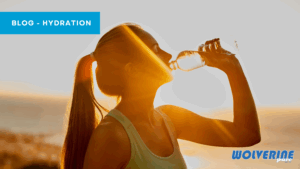Wherever water flows in your home, you are likely to find hard water stains. Nearly 85% of homes in America have hard water. From white spots on your glassware to a crusty build-up on your faucets and fixtures, managing these stains month after month can feel like a chore.
How quickly the stains come back depends on the hardness of your water. Even if your home has mild or moderately hard water, excess mineral build-up can cause permanent staining to your tubs and fixtures over time (and cause unseen damage to your pipes and internal plumbing). So, it’s in your best interest to address these stains sooner rather than later to prevent further damage.
Here are a few simple tricks to tackling hard water in your home.
- Use Vinegar and Baking Soda
An old-school favorite, this powerful combination of everyday home products is a common treatment regimen for hard water stains. Vinegar effectively breaks down the mineral buildup, making it easy to scrub away. How you apply the vinegar to the stained surface depends a lot on where the stain is located. You can soak a washcloth or paper towel in vinegar and wrap it around faucets. Fill a spray bottle with vinegar and spray it directly onto glass shower doors or walls. Or, for stubborn toilet bowl stains, warm a bowl of vinegar in the microwave and pour it into your toilet basin. In each case, let the vinegar sit on the stain’s surface for 15 minutes or so. Then, use a sponge or scrubbing brush to lift away the broken-down mineral deposits.
Sometimes, vinegar alone can do the trick. But for extra stubborn stains, you may need to add baking soda. The fizzy chemical reaction can provide some extra crust-fighting power. Make a paste with two parts vinegar and one part baking soda and apply it to the stain. Your handy scrubber brush will help you scrape away any remaining residue.
While this method is cost-effective, it can be labor-intensive depending on the severity of the staining, and you’ll likely have to repeat this process a few times a year.
- Specialized Products
Walk down the grocery store cleaning aisle, and you’ll see many specialized products specially designed for hard water stain removal. Products like CLR, Barkeepers Friend, and Lime-Away contain abrasive powders and acids to help break up the mineral deposits (similar to the vinegar and baking soda approach). While these products may clean more efficiently than your pantry items, you’ll still need to do some scrubbing on the back end to lift those stains away, and you’ll need to keep purchasing the product every time the stains come back.
- Immediately Dry Surfaces
When hard water is allowed to sit on a surface and dry, it leaves behind stains and spots. After the water evaporates, the extra calcium and magnesium in the water remain on the surface of your drinking glasses, shower door, faucets, etc. An effective way to prevent this staining is to dry all of your water-adjacent surfaces immediately. Use a dish towel to immediately hand-dry glasses after they have been washed. Keep a microfiber cloth or a squeegee in your bathroom to remove excess water from faucets and shower doors after your morning shower.
This approach can be an effective preventative measure, but it requires a lot of time and ongoing maintenance. Just one missed squeegee on a glass shower door can leave behind a brand-new set of hard water stains for you to clean.
- Solve the Root of the Problem
The best way to treat hard water stains is to prevent them from happening in the first place. Installing a whole-home water purification system can help ensure that the water flowing through your pipes and out of your fixtures is free from excess minerals. You can enjoy fresh, clean, softened water throughout your kitchen, laundry, and bathroom. You’ll notice improved taste, quality, and longer use of your home’s appliances and a simplified cleaning routine.
Schedule your free in-home water test today to see how you can get rid of hard water stains forever.





